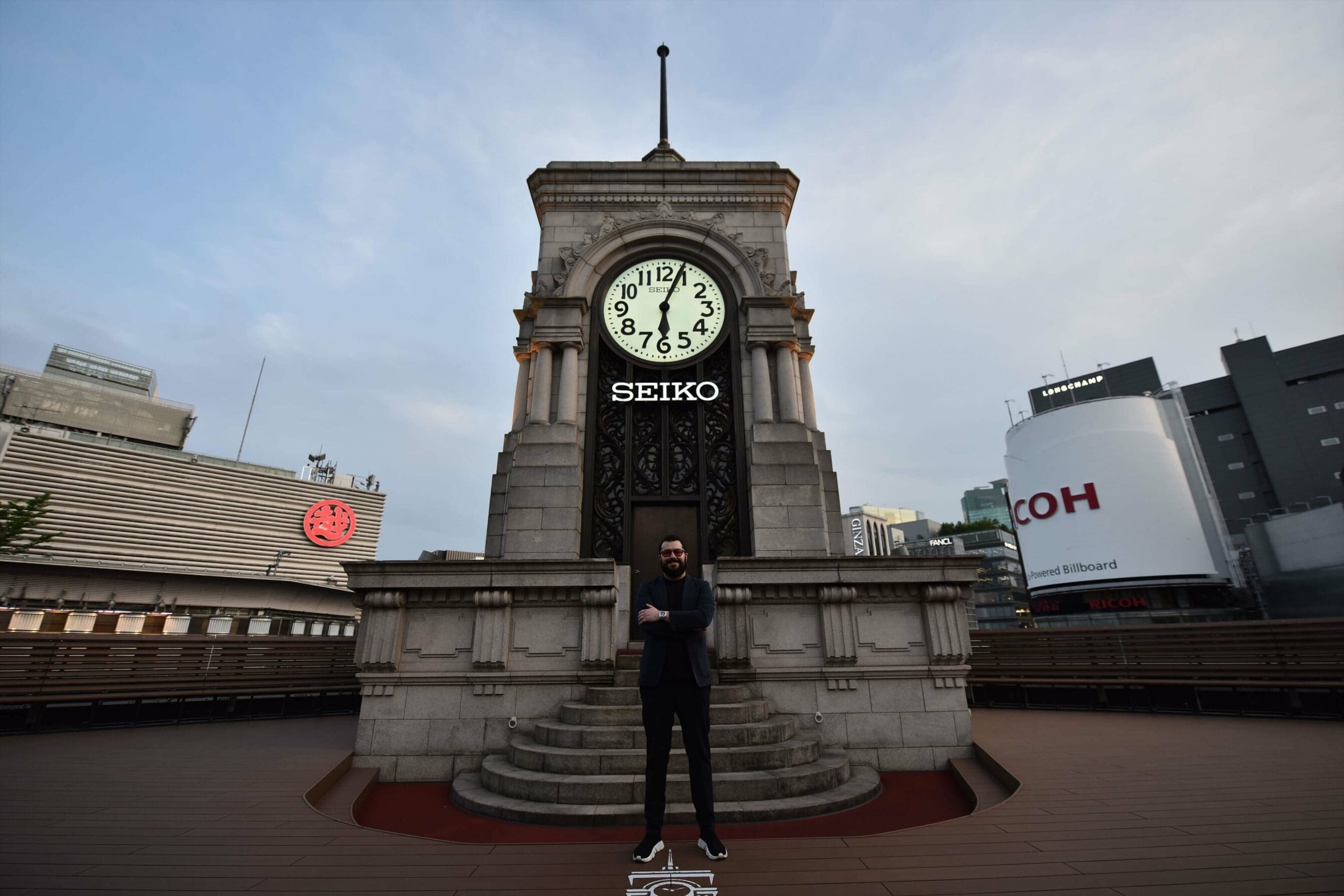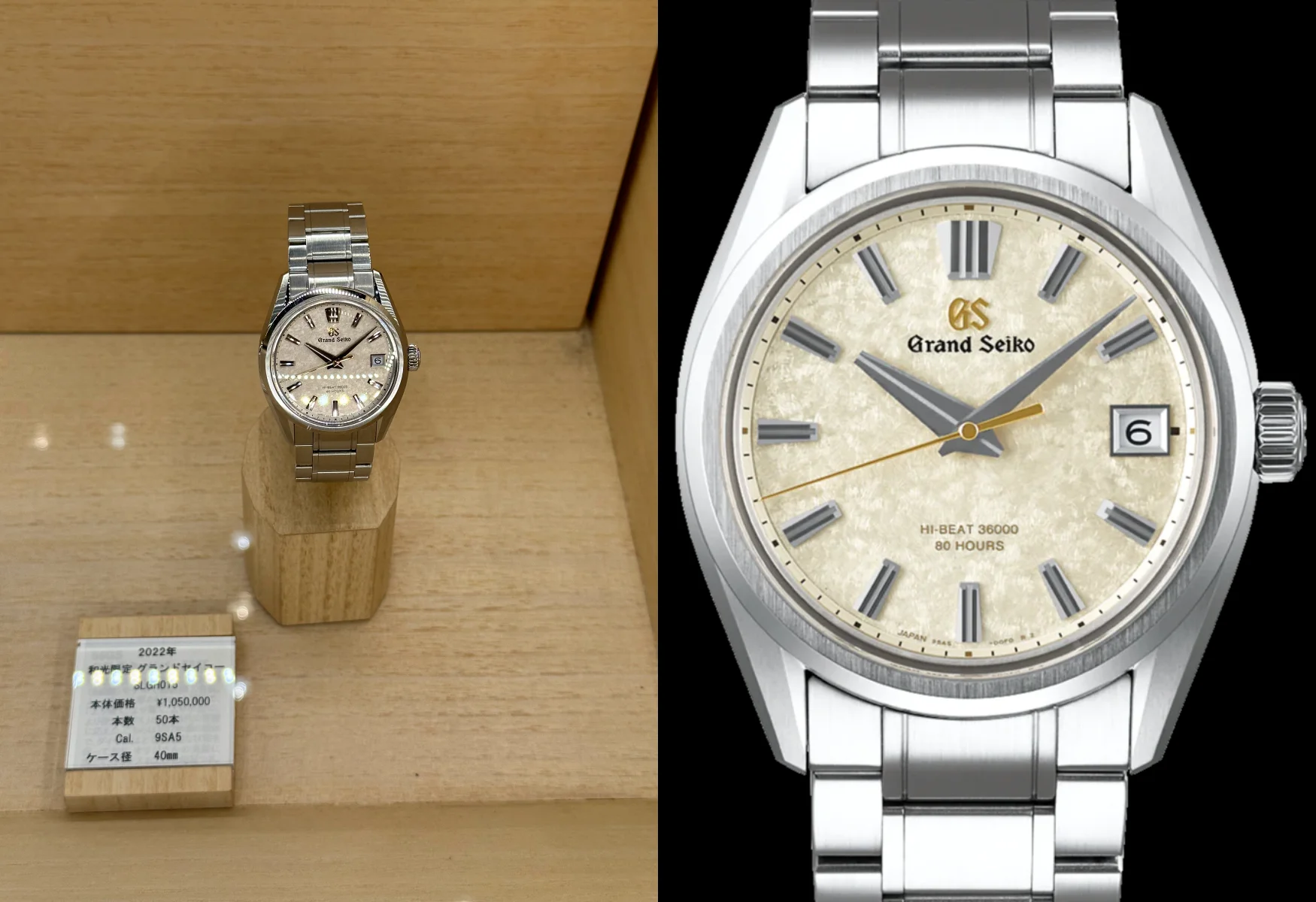Grand Seiko Manufacture Tour Part 3: The Seiko House Ginza (Wako Main Building)
Zach BlassSo. I have detailed the first stop of my trip to Japan with Grand Seiko at the Grand Seiko Studio Shizukuishi – the home of all things 9S mechanical. Then we returned back to Ginza from Morioka, and swung by the Seiko Museum Ginza to get intimate with the history of the corporation and the various creations they have produced over the years. After a manufacture visit, and a museum visit, it was time for some retail therapy. And, where better to do that than the Seiko House Ginza (formerly known as the Wako Main Building).
The Seiko House Ginza is a historical landmark in Japan, a hub of Seiko operations dating all the way back to 1895 after its purchase by Kintaro Hattori (the founder of Seiko). Interrupted only by natural disasters and during times of war, this very site has remained a point of continuous Seiko operations. A signature element of the building, the Hattori Clocktower, was completed in 1932 after being moved from the Choya Shinbun Newspaper building Seiko operated out of prior to 1895.
Over the years, the Hattori Clocktower has undergone many renovations to ensure its preservation and best embodies the Seiko brand. Miraculously, only three of the four panels of the clocktower were damaged in 1945 after a a wave of B-29 bombers levelled Ginza and the surrounding area. On June 10, 1954, on Time Memorial Day, the clocktower was upgraded to not only chime the hours but also the quarters in a Westminster chime style. In 1966, the weight-winding system powering the clock was converted to a Seiko quartz oscillation movement – later replaced with an even higher-precision quartz movement in 1974 to ensure more accurate timekeeping. This move to quartz best conveys the significance of Seiko developing quartz technology, and speaks to the translation of the brand name “the house of precision”. Seiko, who also innovated Astron GPS technology, would later add a GPS system to the clock in 2004. Lastly, in 2008, Seiko performed renovations to the clocktower to ensure the integrity of the structure was more robust than ever and in 2011 the Seiko name was brought back to the clocktower.
While owned by the Seiko Corporation, the Seiko House Ginza (formerly the Wako Main Building) is home to many floors that each have their own specialties. Of course Seiko, Grand Seiko, Credor, and even Wako-branded watches can be bought here. But, other international watch brands can be purchased in the Seiko House Ginza along with mens and womenswear, accessories, handbags, and more. The first floor is where you can find watches from various Seiko Corporation brands and imported brands including Jaeger-LeCoultre, Glashütte Original, IWC, Panerai, Franck Muller, Baume & Mercier and Piaget.

That being said, while there are some Seiko Corporation watches on the first floor, the second floor is home to both the Grand Seiko Flagship Boutique, the flagship of all flagships, and the Credor Jewellery Salon. Every modern Grand Seiko watch you can think of can be found here, with a selection of certified vintage models also available and JDM models you probably have never even heard of.
A stand-out offering I did not know of until my visit is the exclusive Grand Seiko Bespoke program offered at Seiko House Ginza. This program allows buyers to work with Grand Seiko to create their own bespoke timepiece. There are parameters though, as the bespoke watches can only be housed in precious metal. The two examples shown, at the time of writing, translate from their price in yen to US$108,578, so this program is certainly not for the faint of budget. It is, however, the ultimate offering for any Grand Seiko lover.
As I mentioned before, I also got a real kick out of seeing many Wako-limited and rare JDM precious metal Grand Seiko watches. A standout, for me, was the SLGH015. I had never heard of the reference until my visit, and would later discover it is a 50-piece limited edition model exclusive to Wako/Seiko House Ginza that commemorated the 90th anniversary of the Hattori clocktower. Its cream-coloured dial takes inspiration from the granite facade of the main building, and it uses a stainless-steel Evolution 9 design framework and is powered by the latest-gen 9SA5 dual impulse hi-beat calibre. At 1,050,000 yen, that, at the time of writing, roughly translates to US$7,403 before taxes, it’s an absolute bargain if you ask me.
To quickly recap, in the basement (B1) floor you can find non watch-related items – tableware, upholstery, clocks, baby gift, small furniture, and carpet items. The first floor is comprised of the “watch square” with both imported and Seiko Corporation watches. The second floor belongs to the Grand Seiko Flagship Boutique and Credor Jewellery Salon. On the third floor you will find women’s clothing, handbags, and accessories and on the fourth floor men’s clothing, glasses, accessories, gift certificates and rotary supplies. The fifth floor is where you will find the Guest Lounge (invitation only) and the sixth floor is where you will find the Seiko Ginza Hall, where regular events and exhibitions such as the upcoming Disney 100th Anniversary celebrations are held. And, on the roof, is the Seiko Sky Garden where you can get a closer look at the Hattori Clocktower (invitation only). But the 7th floor, which *spoiler alert* will be the subject of part four of the Grand Seiko Manufacture Tour series is home to the Atelier Ginza (invitation only) which is the workshop where the Grand Seiko SLGT003 “Kodo” Constant Force Tourbillon is made. Stay tuned!
The Seiko House Ginza is located at 4 Chome-5-11 Ginza, Chuo City, Tokyo 104-0061, Japan.










